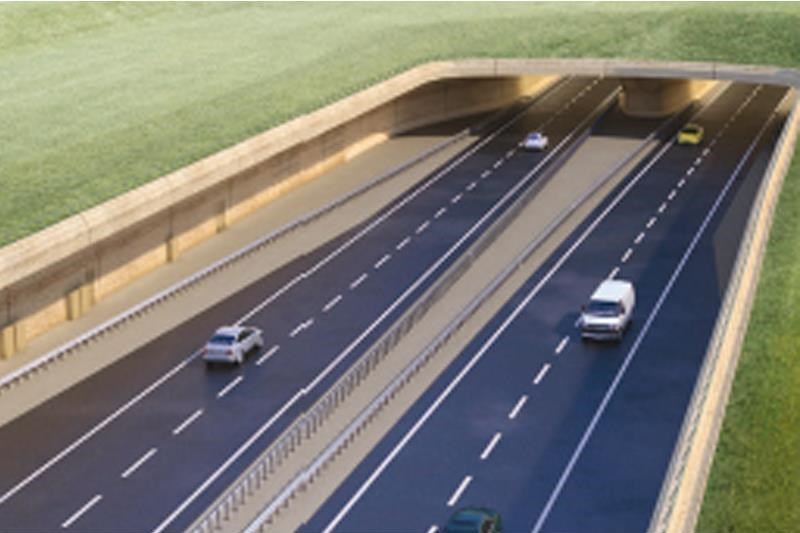The Government's decision last month to go ahead with the Stonehenge tunnel has reignited the controversy that has raged for decades.
Far from achieving closure, the decision has been described as either a ‘boost’ or as ‘a tragedy’, depending on which part of the argument you support.
In the BLUE corner stands Salisbury MP and government minister John Glen who believes the tunnel will be a substantial boost to the south Wiltshire economy.
On the other hand, in the RED part of the ring, is historian and author James Holland who vehemently opposes the scheme, describing it as “a tragedy in the making”.
For centuries people have travelled the route from London to the south west taking in the view of Stonehenge in passing. Soon this view will become a thing of the past. For a guaranteed view of the stones, you will have to pay for the pleasure.
The plan to turn the A303 into a dual carriageway and at the same time take the road underground has been debated, argued and disputed since the 1970s.
Anyone living in Amesbury or the surrounding villages knows only too well that at peak times, particularly in the summer, motorists, fed up with hours of queuing, look for an alternative route through their villages. So for those in favour of the project the end is in sight.
Preparatory work is expected to start in the spring, leading to the five-year construction phase due to start in 2023. Planners advised the government against the scheme but transport secretary Grant Shapps, overruled the recommendation.
Not surprisingly, John Glen, the economic secretary to the Treasury, toes the government line.
He tells me: “This is a major national infrastructure project to reduce journey times to the south west. It also has the benefit to us locally of reducing congestion in villages along the route that are blighted by rat running, as well as reuniting the ancient landscape at Stonehenge.“
Mr Glen also states the plans are supported by those who are responsible for the ancient site. “It is important to note that the decision has been taken after extensive consultation with heritage organisations and this is the only option that meets the criteria laid down by the custodians of the world heritage site.
“As such, I am satisfied that Highways England have gone to extraordinary lengths to protect the unique environmental, heritage and archaeological importance of the area.”
Historian and author James Holland pulls no punches. “The proposed tunnel is a tragedy in the making. A tunnel requires a ramp down at both ends and, as planned, these will be dug out within the UNESCO world heritage site.
“The protected Stonehenge site is not just the stone circle but a wider area of perhaps the most archaeologically rich in the entire country, if not Europe.
“Millions of tons of soil and rock – and with it untold numbers of archaeological artefacts, will be removed from within the site, and once they’re gone, they’re gone.
“Millennia of rock, soil and archaeology excavated and removed forever. It will a desecration to rival some of the worst cultural vandalism seen anywhere in the world.”
So will the tunnel solve the traffic congestion issue? James Holland thinks not. “As motorists emerge from the tunnel heading west they will immediately return to single lane traffic, creating a potential choke point within the tunnel itself.
“In fact, key parts of the A303 remain single lane – at Sparkford, for example, and again in the Blackdown Hills. Until the entire road is dual carriageway, the issues of traffic congestion will not go away.”
John Glen disagrees, believing the scheme has potential to boost the south Wiltshire economy.
He adds: “There will also be substantial local economic stimulus during the construction phase.”
For example, he cites Wessex Archaeology in Old Sarum which has already been awarded a £35 million contract for the project. He believes there will be many other local firms in the supply chain which will benefit.
The cost of the scheme is estimated at £1.7 billion, money James Holland believes could be better spent elsewhere. He says: “It feels like short-termism.”
He goes on: “If any recent large construction projects are anything to go by – and surely they are – this figure will double. That’s an awful lot of money to spend on a project that will desecrate a world heritage site and is unlikely to solve the very issue it is designed to do – money that could be better spent on schools, the NHS, defence – or the truly deplorable state of Wiltshire’s roads.”
As the decision continues to divide, one thing is certain once built, there will be no going back.
STOP PRESS: As we go to print the news has just been announced that the Stonehenge Alliance has launched an appeal to overturn the decision.
What do you think? Please write to Georgie Green, editor, Wiltshire Life, Dinton Business Park, Catherine Ford Road, Dinton, SP3 5HZ. Email: Georgie.green@ markallengroup.com Please let me know which side of the argument you are on. I will publish a range of your views and give three book tokens of £25 each to those readers who, in my opinion, present the best arguments. Deadline: January 5, 2021.
